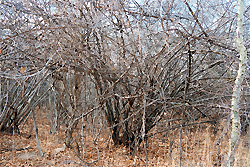 |
z czterech stron swiata
|
| Zobacz poprzedni temat :: Zobacz następny temat |
| Autor |
Wiadomość |
palmela
Administrator
Dołączył: 14 Wrz 2007
Posty: 1880
Przeczytał: 0 tematów
|
 Wysłany: Czw 12:15, 13 Gru 2007 Temat postu: Tanzania Wysłany: Czw 12:15, 13 Gru 2007 Temat postu: Tanzania |
|
|
Tanzania also destroyed free markets in favour of state control and socialism, with similar results. The problems in Tanzania began when president Julius Nyerere issued the Arusha Declaration, a plan for turning the country into a socialist paradise.
The major industries were socialised and massive resettlement programs were forced on the people. The old villages were destroyed and the peasant farmers forced into collectives.
Government regulations required that food be sold to the government.
Again, food production plummeted and people could no longer find enough to eat. Ibid, p. 107.
Note Swedish economist Sven Rydenfelt tells what happened:By 1979, five years after the enforced resettlement, domestic agricultural production in Tanzania was already incapable of providing the cities with food.
Imports had to be increased to compensate for declining production, and in 1980 no less than half of the food needed by Tanzania was being imported. A decade of socialist agricultural policy had been sufficient to destroy the socio-ecological system. Sven Rydenfelt, A Pattern for Failure (New York: Harcourt, Brace, Jovanovich, 1983), p. 121.
Note Rydenfelt quotes a Norwegian newspaper that reported, "Large sectors of the production system stand still, food lines in the capital city of Dar es Salaam were never longer, and shop shelves never more empty." Ibid.
Note According to World Bank statistics, the Tanzanian economy contracted on average 0.5 percent each year between 1965 and 1988, and personal consumption dropped by 43 percent. Ayittey, Africa Betrayed, p. 282.
Note A Norwegian radio commentator who visited Tanzania in 1982 reported:On days when bread was delivered to the stores, people had to line up for hours. Even commodities like soap, toothpaste, salt, flour, cooking oil, batteries and bandages were lacking. People starve, and starving people get desperate. . . .
The brutal truth is that the policy of President Nyerere has completely failed. . . .
The Tanzanians are unable to manage the many state enterprises, and today production is only 30 percent of its volume a few years ago. Rydenfelt, A Pattern for Failure, pp. 123-124.Note
Ostatnio zmieniony przez palmela dnia Wto 16:44, 17 Paź 2017, w całości zmieniany 1 raz
|
|
| Powrót do góry |
|
 |
|
|
 |
| Zobacz poprzedni temat :: Zobacz następny temat |
| Autor |
Wiadomość |
palmela
Administrator
Dołączył: 14 Wrz 2007
Posty: 1880
Przeczytał: 0 tematów
|
 Wysłany: Wto 16:41, 17 Paź 2017 Temat postu: dopiero od czasow kolonialnych rolnictwo Wysłany: Wto 16:41, 17 Paź 2017 Temat postu: dopiero od czasow kolonialnych rolnictwo |
|
|
A Study on Changes in Environmental Use Associated with Social Changes among the Sandawe Post-Hunter-Gatherers in Tanzania.
YATSUKA Haruna (Division of African Area Studies)
Key Words: East African Khoisan Language Group, Villagization, Vegetation, Social Change, Agriculture

Photo1: Itigi thicket which is a unique vegetation found only in central Tanzania
(2)The Sandawe, together with the Hadza who live in northern Tanzania, belong to the East African Khoisan language group.Originally, the Sandawe were hunter-gatherers. However, according to a report written in 1884, there were some Sandawe who had settled and adopted cultivation and animal husbandry by the end of the 19th century.
In 1971, the Tanzanian government forced the Sandawe to live along roads and to adopt agriculture. This study aims to clarify the various shifts in environmental use caused by these social changes.
(3) From January 23, 2006 to May 22, 2006, I conducted my field research among the Sandawe in Kondoa district in the Dodoma region. The contents and findings of the research are as follows.
1. I conducted a vegetation survey in order to understand the specific characteristics of the natural environment around the study area.
The Sandawe identify four different vegetation types around the area. Therefore, I selected typical sample points in each vegetation area, and, as a result, I was able to distinguish four different vegetation types: Itigi thicket, miombo woodland, Commiphora thicket and bushland, and grassland and swamp. These are as classified by Trapnell in 1962.
2. In order to examine the relationship between cultivated fields and the local vegetation, I conducted research into Sandawe cultivation. The Sandawe have many choices concerning the crops that are suitable for each vegetation type.
They cultivate some indigenous crops, such as pearl millet, in Itigi thicket and miombo woodland, but cultivate some modern crops, such as maize, in Commiphora thicket and bushland, as well as in the grasslands and swamps.
They choose crops according to the physiological character of the crops, the type of soil, the soil’s conditions, the degree of damage that may be suffered from birds, the distance from the fields to their homes, and the taste of the crop.
3. In order to examine the various types of semi-cultivated plants, I set up quadrants in some cultivated fields and conducted interviews concerning their use.
Cultivated plants are rarely used in Sandawe side dishes – the exception is beans – while semi-cultivated plants account for about 50% of all side dishes.The Sandawe desiccate several kilograms of semi-cultivated plants for the dry season. They also often sell or share semi-cultivated plants among themselves.
(Reference)
Trapnell, C. G. (1962) The Natural Vegetation of East Africa. In: E. W. Russell (ed.) The Natural Resources of East Africa. pp.92-102. Nairobi: D. A. Hawkins, Ltd.
[link widoczny dla zalogowanych]
|
|
| Powrót do góry |
|
 |
|
|
Możesz pisać nowe tematy
Możesz odpowiadać w tematach
Nie możesz zmieniać swoich postów
Nie możesz usuwać swoich postów
Nie możesz głosować w ankietach
|
fora.pl - załóż własne forum dyskusyjne za darmo
Powered by phpBB © 2001, 2005 phpBB Group
|
